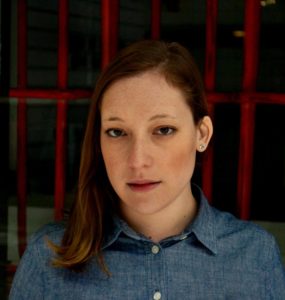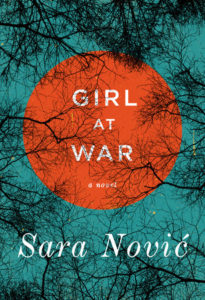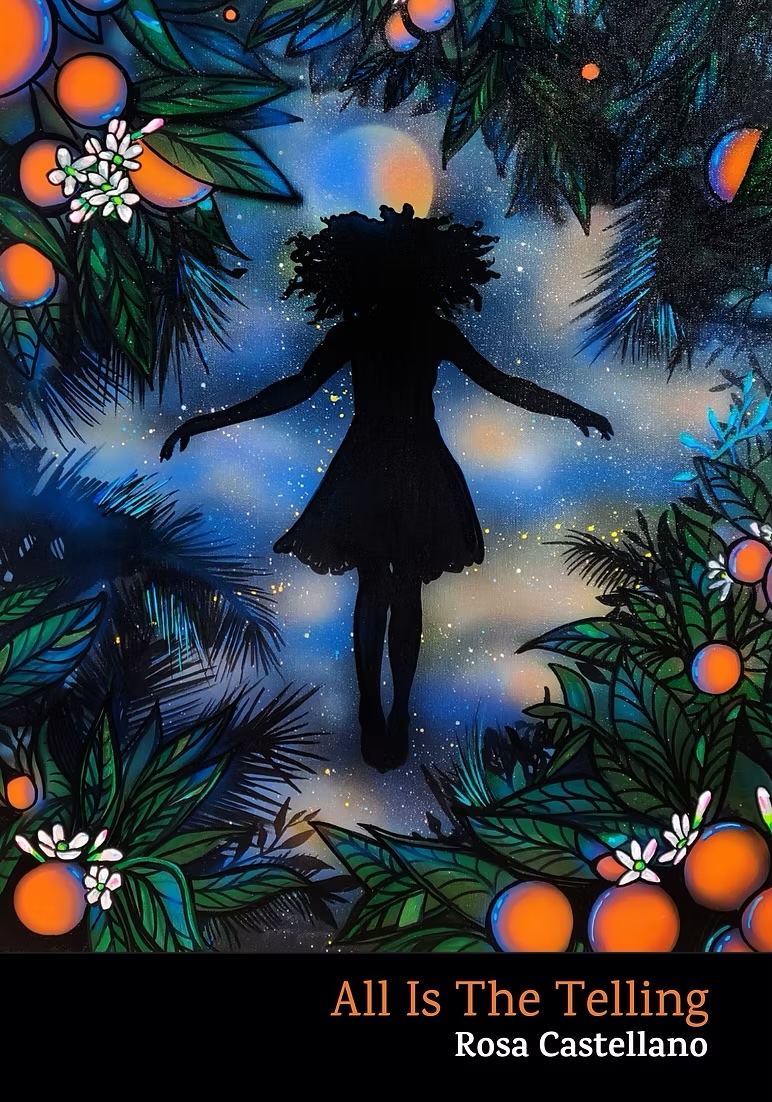S. TREMAINE NELSON interviews SARA NOVIĆ

Sara Nović’s first book, Girl at War, was published by Random House earlier this year and was immediately well received: described by critics as “outstanding,” “intimate and immense,” The New York Times concluded it is “a brutal novel, but a beautiful one.” American-Croatian Nović recently graduated from the MFA program at Columbia University, where she studied fiction and literary translation. She is the fiction editor at Blunderbuss Magazine and the founder of ReDeafined, as well as an advocate for the Deaf community. S. Tremaine Nelson spoke with Nović in June while she was on a book tour in London.
The first few questions weren’t so much queries as they were comments Nelson couldn’t resist sending to Nović via email while he read her book, as it affected him so intensely from the opening pages.
*
S. Tremaine Nelson (STN): [After having read the first 50 pages of Girl at War, I sent the following comment to Sara via email.] Your book is gutting me. I just finished the first section and am sitting here speechless. I’m feeling all kinds of feelings.
Sara Nović (SN): [Sara’s response via email a few minutes later.] I’m very glad to hear the book is giving you the feels. 🙂
STN: [Follow-up email an hour later.] Wow. I finished it in a single reading. And my initial reaction was to say “thank you for writing this.” In the most complimentary way I can imagine, it reminded me of Persepolis and, also, in a different way, Juan Gabriel Vazquez’s The Sound of Things Falling, both of which are a few of my very favorite books.
SN: Thanks so much for reading, and for your kind note. It really means a lot to hear nice things from people who I know are serious readers.
STN: Okay, a few more detailed questions. Let’s start with character: of the many complex, fully realized characters in Girl at War, for whom did you have the most affection?
SN: Making me choose a favorite child right off the bat! Obviously I cared a great deal for Ana after hanging out with her for so long, and I identify with her in certain ways, too, like growing up a raging tomboy. The character that I can picture most clearly in my mind physically is probably Luka. I think that’s because I borrowed some of his mannerisms from a friend of mine, so I feel an affection for Luka when he moves or speaks in a way that reminds me of that friend, even though in other ways he totally diverges and becomes his own character.
STN: Grown-up Ana, living in the States, talks about the pleasures of baseball so convincingly: are you a baseball fan and who is your favorite team?
SN: I am—I’m a giant Mets fan. I was a bit of an insomniac child, and my dad let me sit on the couch with him and watch baseball when I was supposed to be in bed, so I always think of baseball as an instrument of calm, and thought Ana would probably get a similar pleasure from the rhythm, statistical comprehensibility, and general mellowness of the sport. Plus, in my lifetime the Mets have always been terrible, and there’s something pleasurable about rooting for a consistently terrible underdog. When they won nine in a row at the start of this season I was actually confused by the feeling!
STN: Early on in Girl at War, Ana describes seeing signs in the Croatian and Serbian languages and notes their differences. Similarly, are there advantages to the Croatian language that English does not have and vice versa?
SN: All languages are unique in certain ways, and I am a firm believer in the idea that the language(s) you speak shape(s) the way you think, though I’m not sure if these differences can be categorized as advantages or disadvantages, exactly.
One interesting difference between Bosnian/Serbian/Croatian and English is that the former languages are cased, meaning a noun’s ending changes depending on its function in the sentence—whether a word is a direct or indirect object, etc. Anyway, what this means functionally is that the word order in Croatian is much freer than in English, which is dependent on syntax, rather than changing word endings, to make its meaning clear. I don’t think one system is necessarily better than the other, but it’s certainly something I think about when translating poetry out of Bosnian, for example, because I know the author had almost complete freedom in ordering his words, and wrote them the way he did for a reason.

STN: In your essay published The Guardian, you mention that you consider American Sign Language (ASL) to be your “first” language. Are there ideas you can better express in ASL than in written prose and vice versa?
SN: I don’t think of ASL as my first language, completely—I think written English is where I am most articulate. But in terms of daily interaction ASL is certainly the language in which I feel most comfortable, and that’s a matter of not feeling self-conscious when I’m signing, and not having to work extra hard for basic comprehension like I do when I’m lipreading.
One thing that’s linguistically great about ASL, though, is its visio-spatial nature: you can set up people, places, and objects in the space around you during the course of a conversation, and then later just point back to the spot where you set that person or thing, and everyone will remember to what it is you’re referring.
STN: Did you have an English professor who, like Ana’s professor, first introduced you to the world of literature?
SN: I had a couple. The first iterations of Girl at War characters appeared in a short story I wrote as an undergraduate. I’d taken a creative writing class and didn’t really know what I was doing, and my professor encouraged me to keep writing about the war. Part of that encouragement was him feeding me a lot of books.
There was also another professor whose office and mannerisms were the inspiration for Ana’s Professor Ariel, and I would go there just to be surrounded by his books and be in awe of how much he’d read. He was the person who introduced me to the work of Bosnian poet Izet Sarajlić, who I’ve been translating lately.
STN: Is there a specific book that turned you into a reader?
SN: I was always a reader, even as a kid. A couple times in elementary school it happened that I’d finished all the books on the shelf in the classroom, and the teachers would sort of resignedly send me down the hall to the library, not knowing what else to do with me. I also come from a big music family, and my father owned way more albums and cassettes and CDs than he did books, so I spent a lot of time reading liner notes, which has resulted in a bizarre cache of hippie song lyric knowledge.
But the first book where I realized, “holy shit—every single word has got a function here,” was Ralph Ellison’s Invisible Man. We read it in high school and our English teacher used to make fun of us—we’d ask him these inane questions and he’d say, completely deadpan, “The answer is on page 226.” Then we’d all rush to flip to that page and it’d be blank, and he’d crack up. Not only is Ellison absolutely incredible, but that teacher also taught me to be a reader, to work to understand and interpret a text myself and not depend on other people’s analysis of something.
STN: Ana describes her fondness for W.G. Sebald’s fiction: are you, too, a fan of Sebald? If so, which of his books is your favorite?
SN: I am a big fan of Sebald, and I was thinking a lot about his work while writing Girl at War, particularly with regard to trauma and memory and how one can most effectively portray it, which is why I ended up with the nonlinear structure of the novel. If I had to pick, I’d say Austerlitz and The Emigrants are my favorites.
STN: There’s a saying, “The writer lives twice,” in reference to the act of remembering in order to record: how closely can writing truly come to factual representation of the past?
SN: I think it depends on what kind of past it is. The wars in ex-Yugo countries, for example, are particularly tricky because the worst of the crimes were committed by paramilitary groups rather than official, government-sanctioned armies. I did do a lot of research for the book about these kinds of who/what/where/when facts, because I think when writing about a war that happened so recently, this kind of accuracy is important in shaping the world of the book, but the facts are still being unearthed on a really basic level—they just found another mass grave site in Bosnia yesterday.
In the end, though, I’m not sure presenting the facts is the most important work that fiction can do; in a lot of ways I think a novelist’s job is to give the reader the capacity to empathize with people whose experiences are vastly different from his/her own—and those feelings are a kind of experiential truth that you wouldn’t get from a newspaper article or history text.
STN: Besides Rebecca West’s Black Lamb and Grey Falcon (which Ana mentions), are there additional books on the history and culture of the Balkans you’d recommend?
SN: Peter Maass’s Love Thy Neighbor and Robert D. Kaplan’s Balkan Ghosts, for nonfiction. There’s also a lot of great fiction that comes out of ex-Yugo countries—Aleksander Hemon’s The Question of Bruno or anything by Dubravka Ugrešić are good places to start.
STN: What are you reading today?
SN: I just finished reading Heidi Julavits’s The Folded Clock, and loved it. Reading it feels as if you’re having a slumber party with your best friend, and she’s telling you all of her secrets, but your best friend is smarter than you, so her secrets also blow your mind, existentially.
STN: What are you working on next?
SN: I’ve been writing a short story about some Deaf characters. The story keeps getting fatter and fatter instead of ending, so I eye it with suspicion. I don’t know what will happen with it for sure!
*
Sara Nović’s debut novel Girl at War is published by Random House.
S. Tremaine Nelson is a graduate of Vanderbilt University and founder of The Literary Man book blog.
Photo credit: headshot by Alan Caras



